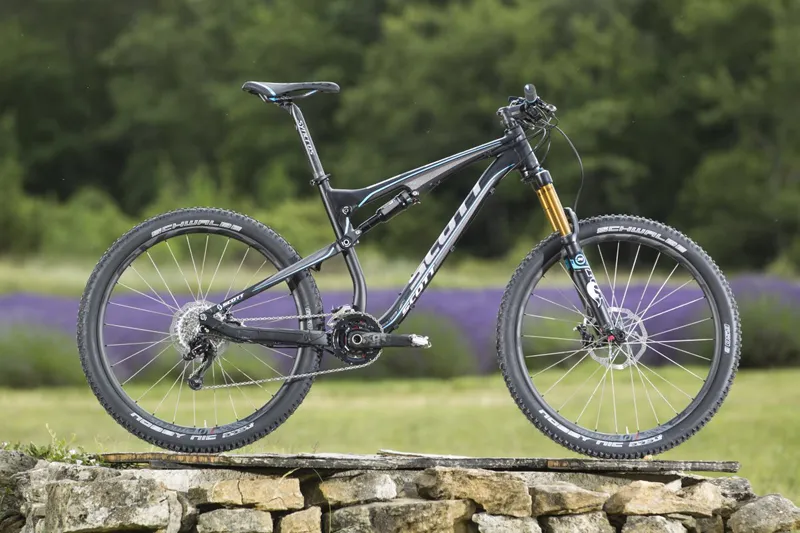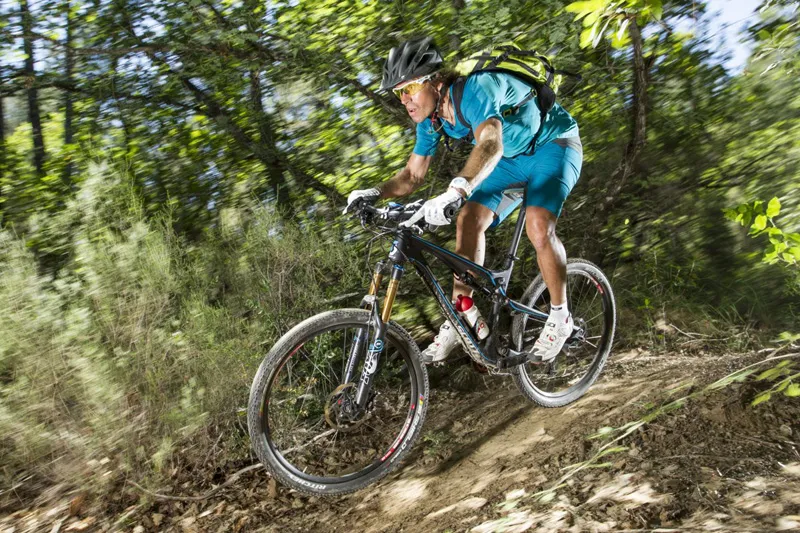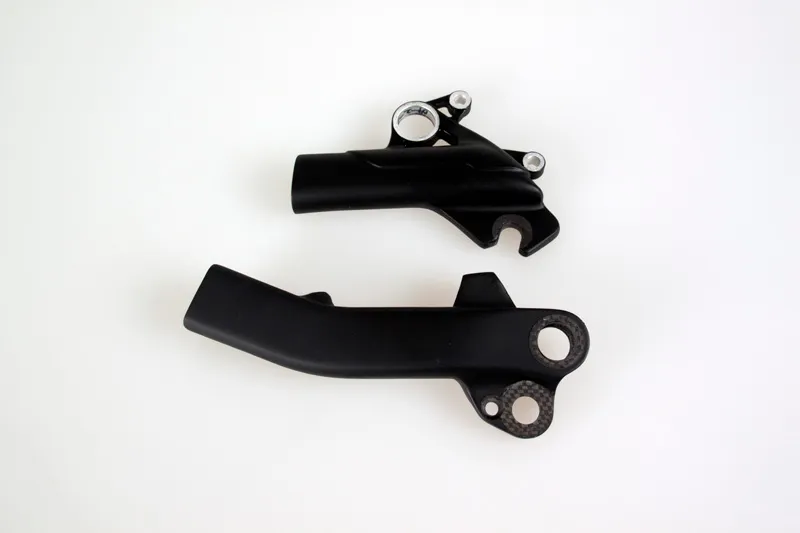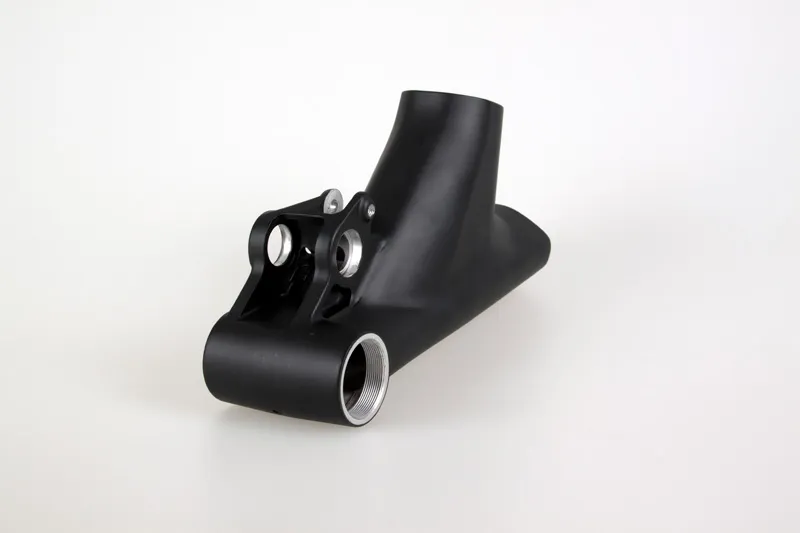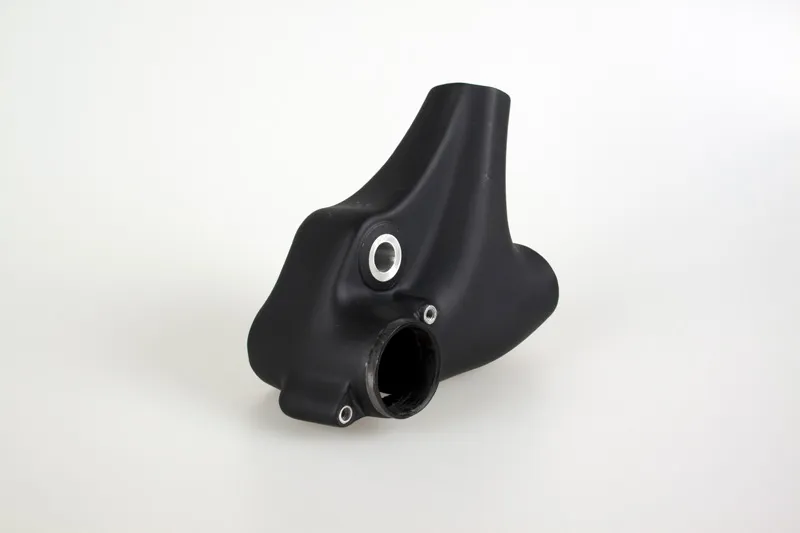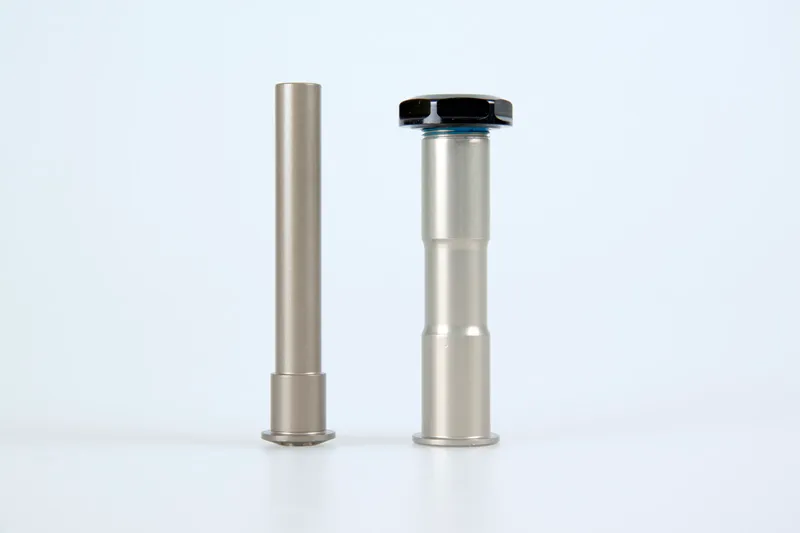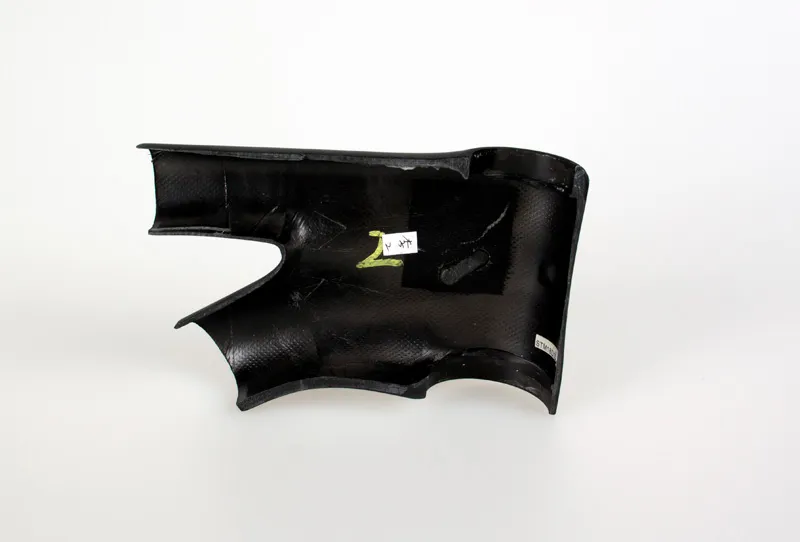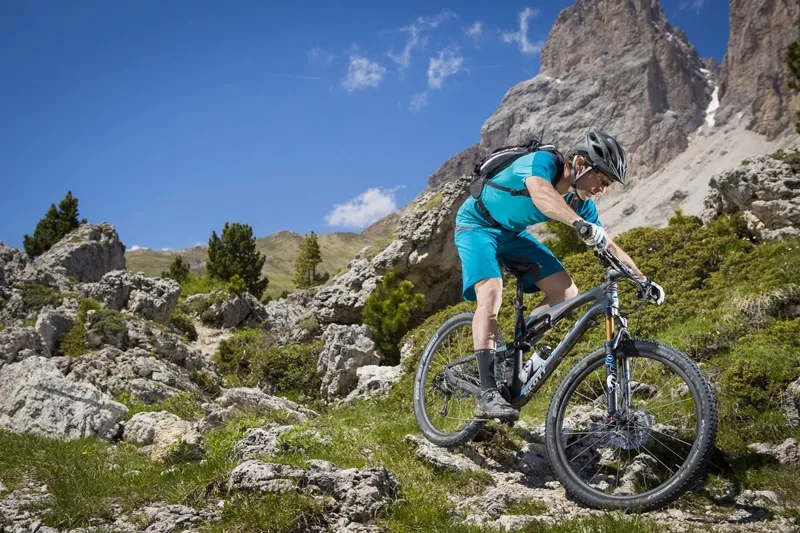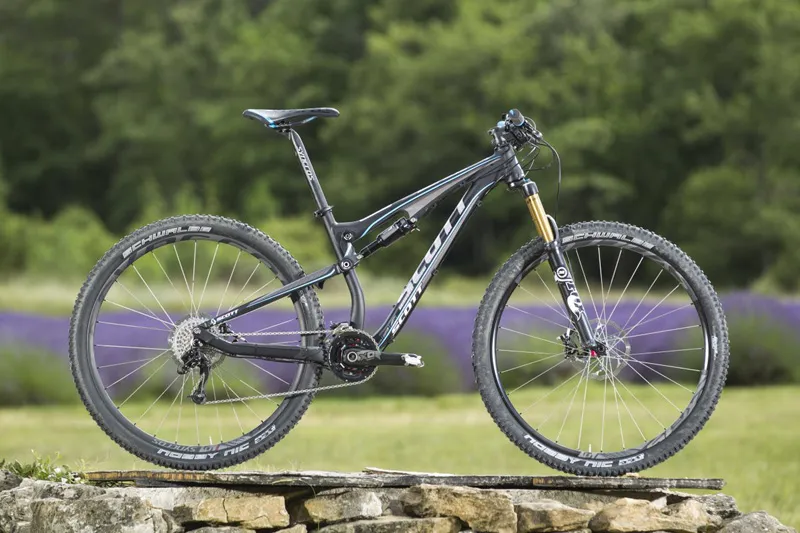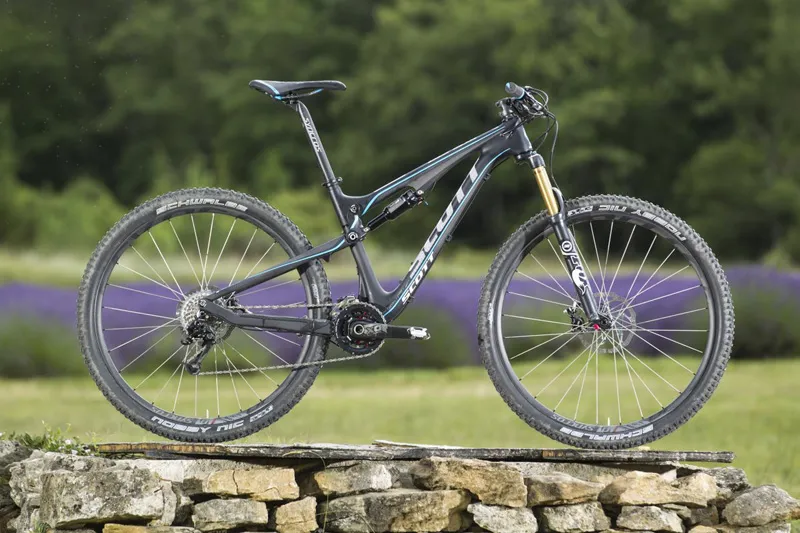Scott have never been shy about using technology to push things forward, and they’ve really pushed the boat out with their 2013 Genius bikes.
Not content with a complete reworking of the old Genius, they’ve gone and scrapped the 26in-wheeled trail bike, opting instead for both 650b (27.5in) and 29er wheel formats.
The core theme of the new models is still to cater for many trails and riding styles, with a 650b Genius 700 and 29er Genius 900 on offer for 2013.
The frame
The frame for both bikes is all new, from the press-fit bottom bracket to the new head tube.
The biggest change is the loss of the Peter Denk-developed pull shock, a design that unsurprisingly popped up on Cannondale’s new Jekyll after he switched companies. Losing the shock was a point of contention within Scott’s design and engineering team, but the scales don’t lie – using a normal-looking push shock has saved more than 200g.
It has knock-on benefits too – a much easier setup and easier-to-set sag, for example. The positioning of the old Genius shock also meant it was in the firing line for crud and rocks.
The level of detail in the new frame is impressive – the way the small details combine creates a fantastic overall bike. There are new multi-fit dropouts, a new shock and linkage, new frame, new geometry – even the cable-mounting system on the down tube is original.
The redesign was driven by the classic engineering axiom of ‘lighter but stiffer’. To achieve this goal, all the key front triangle joints have been supersized, and the new head tube has a much larger cross-section, eliminating the need to insert an additional headset cup and smoothing the top tube and down tube to head tube joints.
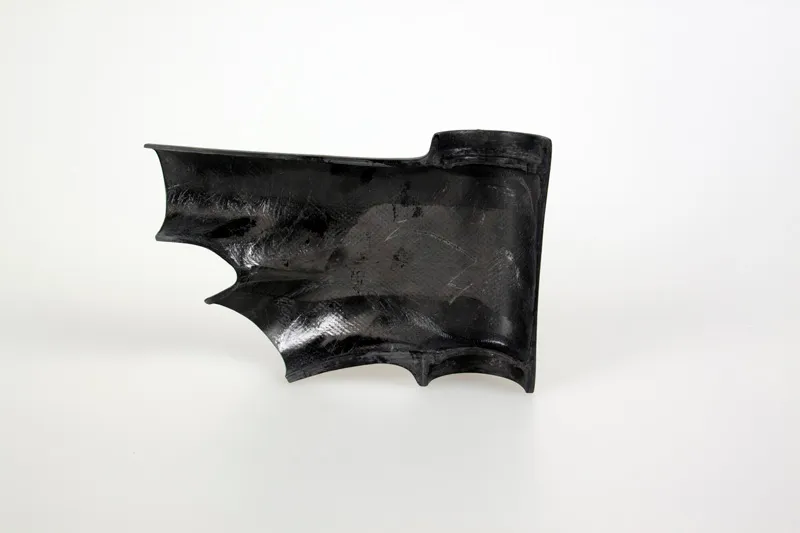
The head tube from the old, 26in-wheeled Genius trail bike
The bottom bracket goes from regular to a press-fit BB92, boosting frame stiffness and smoothing frame form for the carbon, and to a lesser extent the alloy, bikes. Often, press-fits limit front end shifting and setup options, but the Genius sports ISCG mounts and Scott have fitted a chain blocker – a simple alu plate that bolts on to stop the chain damaging the frame.
Another change is that gear cables have gone internal. The designers weren’t keen to put the hydro hoses through too, though, so they’re mounted using an all-new guide. The guide assembly uses a composite hose clip mounted to the frame with a zip-tie.
On the face of things this isn’t so exciting, but the new design means no holes and bolts go through the frame. For carbon and alloy it’s another small weight saving and strength boost. The design team have really thought about how to refit the cables, with a neat plastic plug covering a relatively large hole at the base of the down tube.
With all the tubing and carbon forms increasing in size, it’s not surprising that the main pivot has increased in size too. This has increased the stiffness, but thanks to some clever design it’s the same weight.
More interestingly, the suspension hardware from many Scott bikes (from the new Spark onwards) will be shared, making finding parts simpler.
This future-proofing thoughtfulness pops up in the rear dropouts too – the acronym-heavy IDS SL is a bolt-through rear axle that can work with 142x12mm, 135x12mm and 135x10mm quick-releases.
The dropouts offer up lots more stiffness, and the intuitive 135x12mm DT Swiss RWS setup means much speedier use than with a regular open dropout QR. We know because, after a huck too far, we pinch-flatted the rear tyre. It wasn’t something we excepted to do on a 29er, but the quick-release worked impressively.

New dropout hardware for the 2013 Genius 700 and 900
All the logical design has led to some impressive figures from Scott’s design lab. The new Genius 700 and 900 are claimed to be 30 percent stiffer at the BB and 20 percent stiffer at the head tube than the 26in-wheeled bike – all at 150g lighter.
The details
The first thing you’ll notice is how the new suspension layout on both the Genius 700 and 900 is very similar to that of the Spark. However, Scott are keen to point out that the bikes aren’t simply longer-travel Sparks – they’re Genius steeds with 150mm of travel front and rear on the 650b 700 and 130mm front and rear on the 900 29er.
A number of issues arose during development when Scott tried to run the longer-travel setup for the bigger wheel size. The wheelbase grew too long, and large compromises on bar height and chainstay length had to happen to squeeze in the monster wheels. Therefore, the travel was pulled down to 130mm.
Both the Genius 700 and 900 have almost identical cockpit sizing, so hop on the 650b or the 29er and the bar height, reach and stack will be the same. That’s impressive when you consider the wheel size difference – Scott didn’t cheat by using a different stem length either.
The bar-mounted TwinLoc remote now works in a slightly different way. Yes, it’s still another lever on the bar, but it cleverly changes both the shock volume and damping in one or two clicks. Scott are rather pleased that some other large brands are developing similar bike-morphing lever systems – but they did it first.
The shock was co-developed with DT Swiss. For the first time, all levels of bike will have three settings. Old entry-level bikes only featured open and locked-out settings, but now even basic ones have a middle setting. It’s only a change to damping but it should provide game-changing adjustability to all price points.
With a twin chamber, the shock could be confused with Trek’s DRCV, but it works in the opposite way. With the TwinLoc in the Traction mode, the shock closes an internal chamber to reduce the air volume, altering the spring rate for more traction and geometry changes. In comparison, the DRCV opens a second chamber to help create a more linear travel. So, Scott’s system is adjustable on the fly and works to aid traction rather than help change the suspension’s overall feel.
The spring rate/shock volume change is critical to the ride, as it directly affects the sag position and thus the geometry. Sag is set in the open position, and as you click the TwinLoc lever the volume changes and the spring rate is bumped up, reducing your active sag. The BB sits higher and the seat and head angles both steepen up, perfect for pouring on the power on the hills and flatter sections. In the lock-out mode, both the fork and shock have zero sag.
Both the 650b 700 and 29er 900 have the same frame plus shock weight – an impressive 2.3kg (5.07lb). That’s in fancy, all-singing IMP HMX carbon, but the alloy frame is only 450g up on that figure.
The new wheel size does require a new fork, and Scott worked closely to develop a specific fork for the bike – a shortened custom Fox 34 with a QR15 bolt-through axle and a full 150mm of travel, linked with the bar-mounted TwinLoc system. The Genius 900 uses a custom Fox 32 chassis with 130mm of travel.
The rear suspension’s forged link looks similar to that on the Spark, but it’s a much burlier item. It still features the clever flip chip, so that you can change from a low BB and slack head angle to a slightly steeper and higher position.
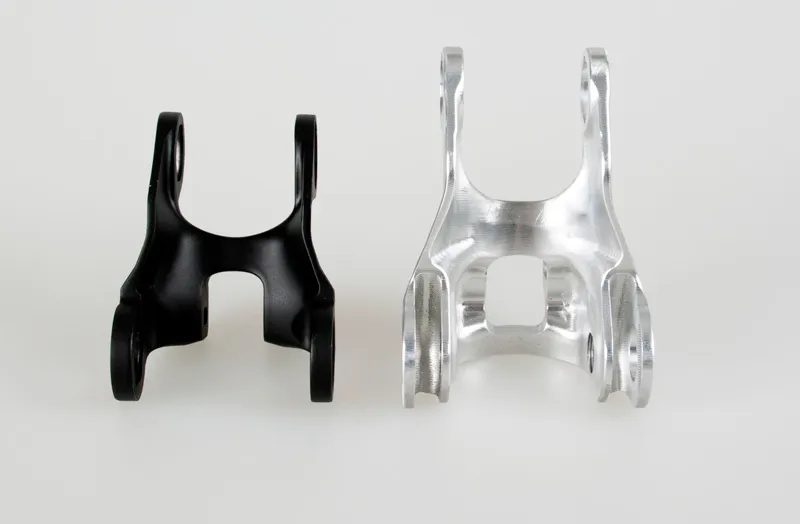
Links from the new Genius bikes (right) and the Scott Spark
The logic behind offering the chip at all is that chief engineer Benoit Grelier wants the bike to be low and slack. That’s how he likes to ride bikes, but he realises that some will need a transition period from an old-school high, steeper setup. Personally, we loved the low position.
Spec wise, our bikes were production frames but with non-standard parts – the final specs and prices should be announced very soon.
We rode with the excellent SRAM X0 2x10 drivetrain, Avid Elixir brakes and a sprinkling of the latest Syncros parts. We also got a carbon-wrapped stem and wide-but-not-quite-wide-enough, big-sweep 720mm bar.
The highlight of the spec would be the all-new DT Swiss-hubbed Syncros carbon rimmed wheels on both the 650b and 29er bikes.
The blinged-out hoops were wrapped in Schwalbe’s well-respected Nobby Nic all-rounders. We pushed the grippy, triple compound tyres to their limits on the wonderful dry, rocky test track.
The ride
As with many bike launches, the hype was oozing. Put simply, all the tech in world doesn’t add up too much if the bikes don’t ride as well as the preamble suggests they will.
Thankfully, our test loop featured a healthy mix of steep descents and climbs, as well as rock gardens, so we could really see what both the Genius 700 and 900 have to offer.
Cockpit fit is impressive – a short 70mm stem and wide 720 bars. It shows that Scott have worked hard to match the frame geometry across the two wheel sizes.
The bolt-through front and rear wheels and overall front-to-back frame stiffness help you work the bike into off-camber sections, and allow you to place the wheels with precision. That’s true for both wheel sizes.
We did notice the stiffer Fox 34 fork on the 650b 700, but only after some ham-fisted, nose-heavy hucks on the 29er. It made us wonder why the bigger Fox wasn’t on the 29er, but Scott pointed to the extra weight of the 34. Yes, paying that price would counter the subtle stiffness difference between the forks, but the inherent wheel stiffness differences would be even more apparent. 29er wheels have longer spokes that flex more than the shorter ones on 27.5in wheels.
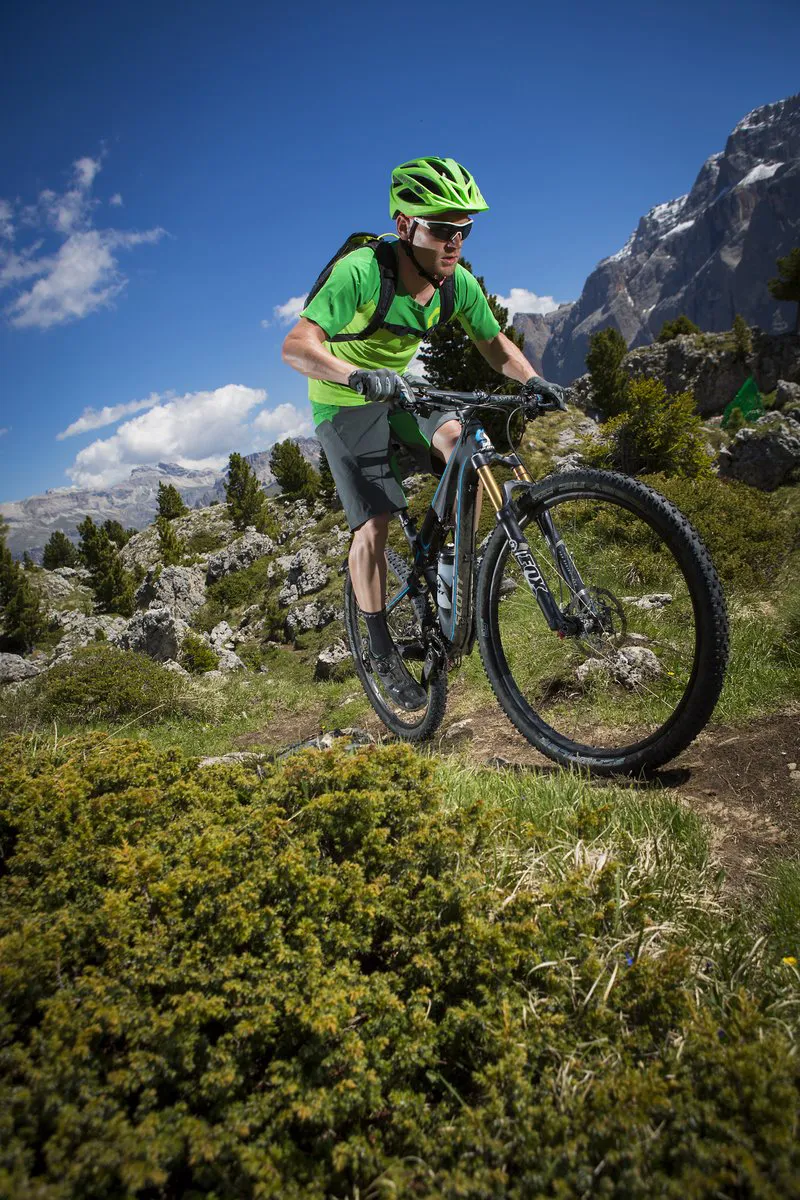
The Genius 900 in use as an effective trail-tamer
The Genius 900 does feel like a 29er, and in this case that’s a good thing – its super stable, as you’d imagine a bike with big travel and big wheels to be. It really enables you to truck through rough sections that would have you stalling and falling on smaller wheels.
Even with the lightweight carbon rims, though, the extra weight in the hoops makes itself know on steeper climbs, especially if you’ve got tired legs. You need to change your riding style to match the wheels, but once in sync the bike flows through tight singletrack with aplomb.
For a lot of British riding, the magic mix of big wheels, big travel and low weight will make the Genius 29er a great option. 29ers would be the future for trail bikes as well as hardtails if it wasn’t for 650b bikes.
The Genius 700 does feel like the inbetweener, and that’s a real compliment. While our first few runs were crash-filled affairs, it was down to the tough and testing trail and our jet-lagged skills rather than the bike.
We need to have a long-term play on our own trails to confirm our initial impressions, but the Genius 700 could be ‘the one’, perfectly combining some of the better rolling of a 29er with the aggression of a 26er.
On steeper climbs and slower trail sections the slack head angle gave some steering wiggle, but not enough to compromise the ride. The advantages on steep and fast sections is worth the wiggle.
First impressions
Which bike is better, the Genius 700 or 900? Well, that’s down to the rider and trail to decide. The 27.5in-wheel 700 offers a slight edge over the 29er for ultra-aggressive riders on super-technical trails.
This paints an unfair picture of the 900, though – it’s still a trail weapon, but not quite as sharp as the 700. It’s more of an axe than a sword. In the right hands, either bike will lay waste to tough sections of trail. We didn’t miss 26in wheels.
As Scott-Swisspower team manager Thomas Frischknecht accidentally let slip in the product launch, 26ers are dead, at least for Scott, and with these new bikes we’re inclined to agree with him. The wheel size debate just went nuclear…
